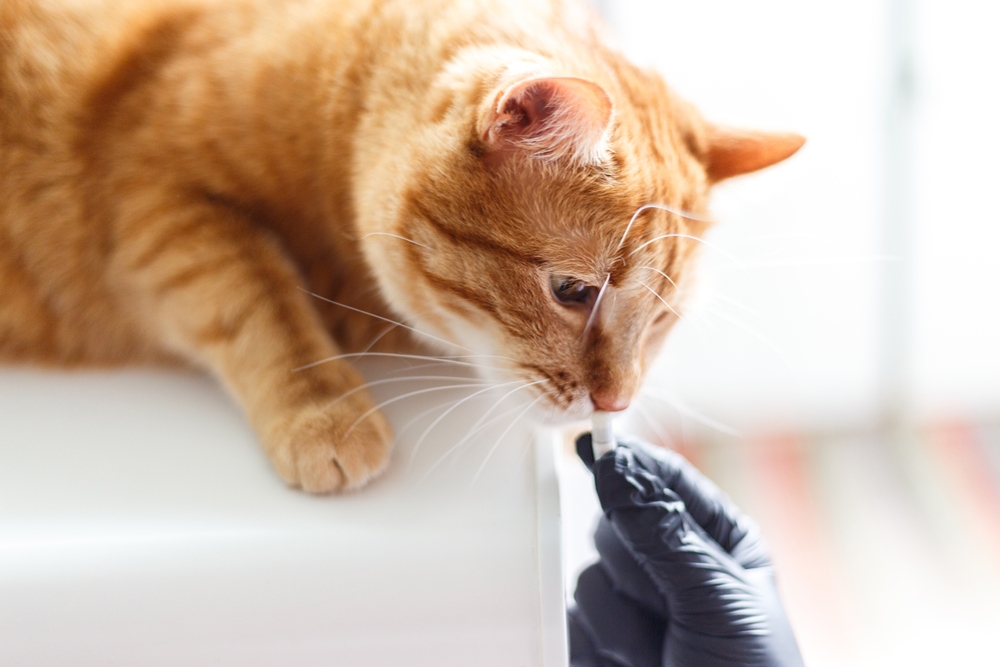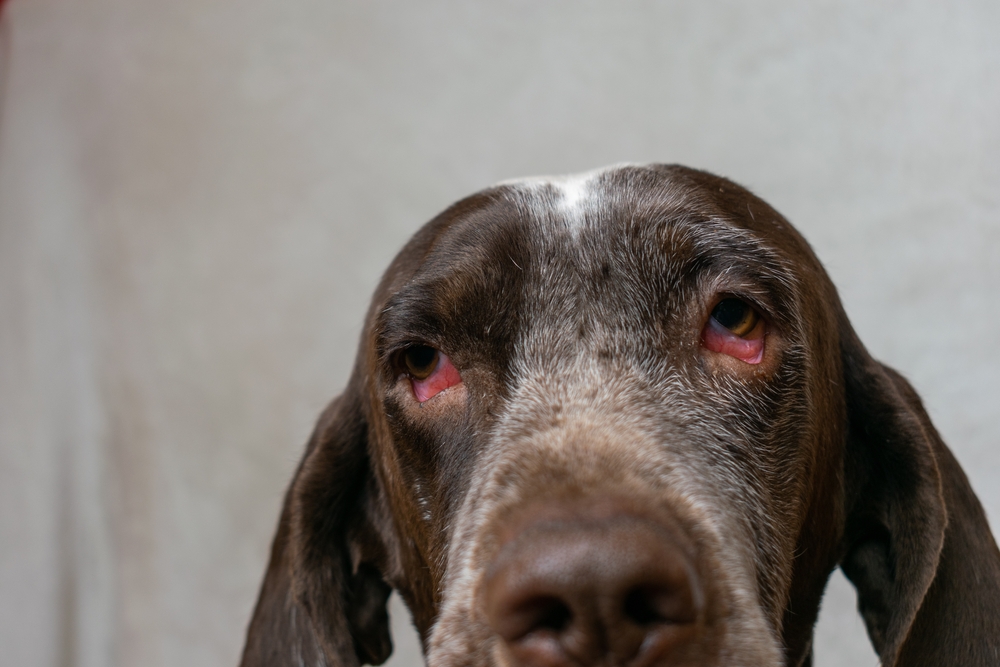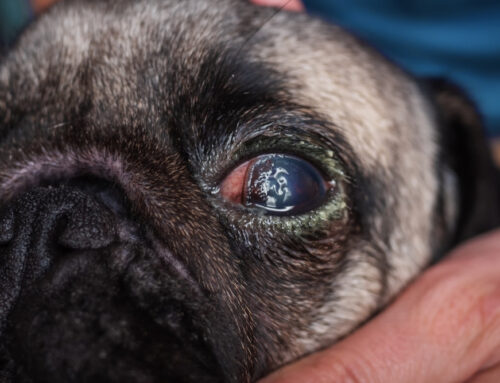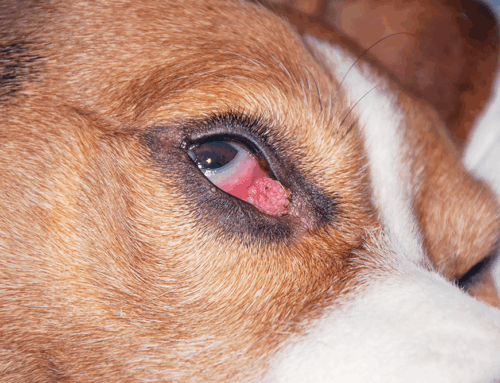Eye health is vital to your pet’s overall well-being. Episcleritis and scleritis are inflammatory conditions that affect the white part of your pet’s eyes, but they differ in severity and underlying causes. Our Envision More Veterinary Ophthalmology team provides a comprehensive guide about the causes, signs, diagnostic approach, and treatment options for these diseases so you know what to expect if your pet is affected.
What are episcleritis and scleritis in pets?
Episcleritis and scleritis are inflammatory eye diseases. Specific definitions include:
- Episcleritis — Episcleritis is an inflammation of the episclera, the thin layer of tissue between the conjunctiva—the membrane covering the white part of the eye—and the sclera—the white part of the eye. This condition is typically less severe than scleritis and often responds well to treatment.
- Scleritis — Scleritis is an inflammation of the sclera, the dense white tissue that forms most of the eye’s outer structure. Scleritis is usually more severe than episcleritis and can be more challenging to treat. In some cases, complications, such as glaucoma and retinal detachment, can occur. Fortunately, this condition is rare in pets.
What causes episcleritis and scleritis in pets?
These diseases’ underlying causes are not always clear. However, several factors can contribute to episcleritis and scleritis such as:
- Immune-mediated disease — Most cases are believed to be caused when a pet’s immune system mistakenly attacks the eye tissue.
- Infection — Bacterial, viral, fungal, or parasitic infections can trigger inflammation, which leads to these conditions.
- Trauma — Injury to the eye can lead to episcleritis or scleritis.
- Neoplasia — Tumors within or near the eye can cause inflammation, which leads to these conditions.
What are episcleritis and scleritis signs in pets?
While both conditions involve eye inflammation, their signs vary. Consider the following:
- Episcleritis signs — General signs include redness of the eye’s white part, changes in eye clarity, a watery or mucoid ocular discharge, and squinting or rubbing at the eye. Episcleritis has two forms:
- Diffuse — Diffuse or simple episcleritis can affect one or both eyes and is most common in golden retrievers and cocker spaniels. In this form, an elevated lesion is seen between the cornea and the white of the eye—the limbic area.
- Nodular — This condition typically only affects one eye and is most common in collie breeds. In this form, a raised pink mass is seen on the cornea or the third eyelid.
- Scleritis signs — Scleritis signs are more severe than episcleritis signs and include intense redness covering a large area of the eye, significant eye pain, pronounced swelling that may affect the entire eye, and potentially, vision impairment. If scleritis is associated with systemic disease, signs may also include lethargy, fever, and decreased appetite.
How are episcleritis and scleritis diagnosed in pets?
A thorough veterinary exam is necessary to diagnose these conditions. Diagnostics may include:
- Physical exam — Our team will assess your pet’s eye and surrounding tissues and also check their vital signs.
- Ophthalmic exam — We use specialized instruments, such as an ophthalmoscope and a slit lamp, to examine your pet’s eye in detail.
- Fluorescein stain — We may apply a special dye to your pet’s eye to check for corneal ulcers or abrasions.
- Blood tests — We may perform blood tests to check for underlying systemic diseases or infections.
- Ultrasound — In some cases, ultrasound is helpful to evaluate structures in and around your pet’s eye.
- Biopsy — A biopsy of the area is typically necessary to determine the underlying cause of episcleritis and scleritis.
How are episcleritis and scleritis treated in pets?

Treatment for episcleritis and scleritis depends on the underlying cause and the condition’s severity. Potential treatments include:
- Steroids — Many cases are responsive to steroid treatment. Therapy may be necessary for several weeks, and doses are usually tapered over time.
- Immunosuppressive drugs — In some cases, immunosuppressive drugs are used in conjunction with steroids.
- Antimicrobials — If the condition is caused by an infection, our team will prescribe an appropriate antimicrobial.
- Pain management — If your pet’s eye discomfort is significant, our team will prescribe an appropriate analgesic medication.
- Surgery — Debulking the episcleritis nodules can also be an effective treatment.
If you are concerned about your pet’s eye health, contact our Envision More Veterinary Ophthalmology team so we can diagnose their condition and devise an appropriate treatment plan.







Leave A Comment